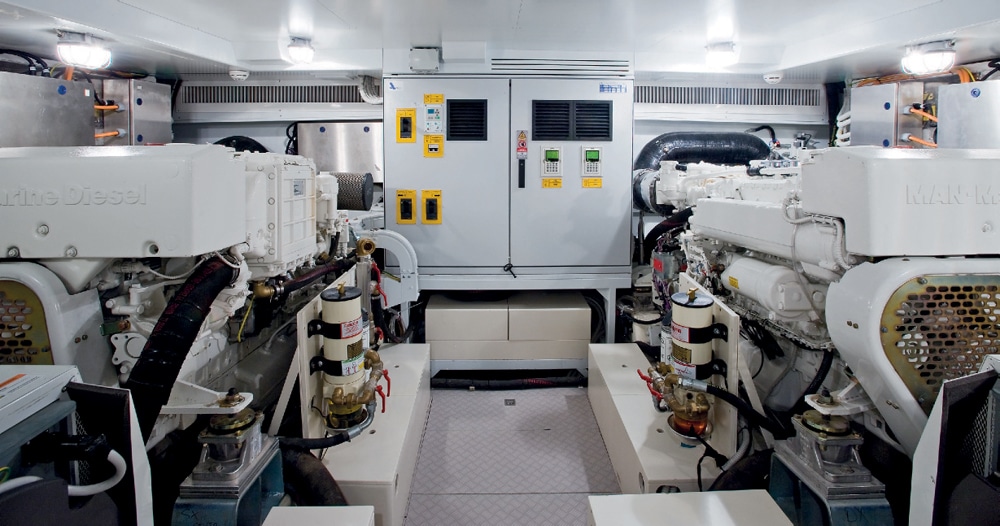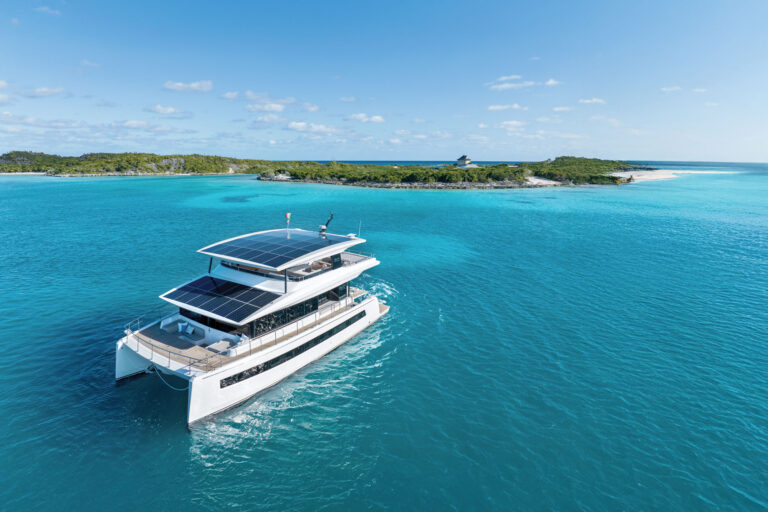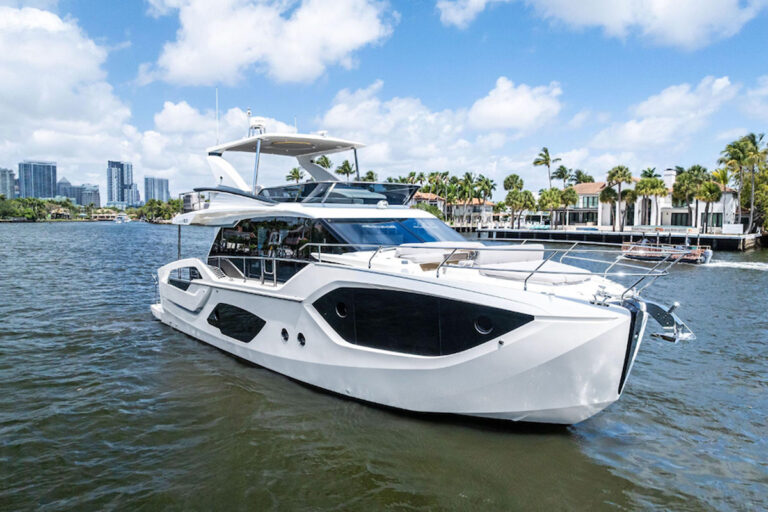
Where Does Hybrid Technology Stand Today?
Some critics would have us believe that the carbon footprint of a yacht is more like a boot print, recklessly stamped on the trampled environment. The fact is that yachting, because of its limited size in the global scale of things and because most yachts spend so little of their lives under way, comprises a very small percentage of man’s impact on the earth. That doesn’t, however, relieve us of doing what we can to help preserve the planet. We may be only a flea riding the rump of the pollution elephant, but we’re still in the parade.
Hybrid propulsion systems have been proposed as one solution. They have been implemented in yachts of all sizes in recent years, from the 39-foot Island Pilot DSe to the 190-foot Royal Huisman Ethereal. Mochi Craft, a division of Ferretti Yachts, offers the 75-foot Long Range 23 with a hybrid option, albeit at a considerable premium.
It’s most important to understand that, although hybrid cars and hybrid boats share the moniker and the basic concept of using an electric motor as a secondary means of propulsion, the two are different animals. As they are in cars, the propulsion systems of hybrid yachts are a combination of diesel or gas engines and electric motors, with big battery banks for energy storage. And as they can in cars, they can run quietly on electrical power for limited periods without engine power. But that is where the similarity ends.
Hybrid cars derive their economy, their “green benefits” if you will, by recovering the energy that would otherwise be wasted in braking and in coasting down hills and then storing it in batteries for later use. Hybrid yachts, on the other hand, don’t have brakes and don’t coast down hills, so just how green can they be?
Well, the answer is encouraging. Unlike cars, yachts have large housetops that can be covered with solar panels to produce electricity. Turbines and windmills can gather wind energy to drive dedicated generators. Propellers, whether on sailboats under way or on motoryachts at anchor in a current, can drive shaft-line generators to produce electricity for battery charging.
In addition to solar, wind and water power, near-shore cruisers and day boats can turn to the shoreside electric grid for charging batteries, a source that is more efficient and less costly than running onboard generators. Hornblower Yachts, a West Coast ferry company, operates its Alcatraz tour boat with contributions from solar power, wind turbines and shoreside power.
I know you sailing folks are feeling a bit smug right now, but you shouldn’t be too comfortable with your environmental friendliness. Unlike cars, yachts — sail and motor alike — use a lot of power for what designers refer to as hotel loads: heating and cooling, watermaking, refrigeration, cooking, lighting and entertainment, for example. These loads can be substantial, as anyone who’s tried to anchor out under battery power can attest. Whether powered directly as DC loads or through inverters as AC loads, the energy usage is the same, and it takes a lot of battery capacity to handle it.
So just where does hybrid technology stand today? I’d say it’s progressing, but not there yet, at least not for most of us. I’ve spent hours aboard Ethereal, reviewing technical details with her crew, and it’s clear she is arguably the most advanced hybrid yacht afloat. She not only boasts energy-producing and energy-recovery systems galore, but also has implemented innovative equipment and procedures to reduce energy consumption substantially. Even so, Bill Joy, her owner, refers to her as a “floating lab.” Joy, a venture capitalist, is footing the bill for the research so the rest of us will be able to adopt the technology on a more affordable basis in coming years. It will be interesting to see where he leads us.









